Last week, I was scouting downtown Brooklyn for apartments when I happened to turn onto Duffield Street and come across a great little surprise I’d forgotten about…
In fact, the best part is that it’s almost invisible when you first start down Duffield.
Then, as you near the halfway point, something quite surreal suddenly comes into view…
Wedged between the surrounding modern buildings, a row of four wonderfully quaint, perfectly preserved 19th century homes in the last place you’d expect to find them.
They’re so out of sync with their surroundings, they almost feel like the backlot set for a period New York movie…
…especially when you step back and consider the skyscrapers that literally come up to their backyards:
I’ve always wondered about the houses, and knocked on a few doors. According to signs, they’re all the property of nearby Metro Tech. Strangely though, they all seemed to be empty, and I was suddenly reminded of the eerily deserted ghost towns I’ve visited in my roadtrips across the US.
As it turns out, all four houses were originally located on Johnson Street near Lawrence (about five blocks away), once a vibrant middle class residential neighborhood filled with like homes that came into being around Brooklyn’s incorporation in the 1830s.
Today, that same street is looking quite different:
Three of the homes were built by Reverend Samuel Johnson, who had inherited land from his grandfather’s farm. The first, #188 Duffield Street, was constructed circa 1835-1838, and later remodeled and enlarged in the 1880s with a combination of Queen Anne and Second Empire designwork.
I love the porch…
…with its nicely stylized overhang:
Next door is #186, built during the same period by Johnson…
…and one of the only homes in New York City with a free-standing Greek Revival portico:
Also of note are the dormer windows:
The third in line, #184, was built in 1847 by merchant Francis Chichester as an investment:
Interesting how the second floor windows appear to stretch from floor to ceiling:
Finally, the last is #182, built by Johnson and the only property not part of the original group.
Throughout the 1800s and early 1900s, these homes would have been occupied primarily by those of the middle class, bridging the literal gap between upper class Brooklyn Heights and the working class Navy Yard area. I love how each has a small garden in front, a stipulation made by Johnson:
Here’s a peek into the backyards, which can be seen via the church alley next door:
So how did the houses wind up on Duffield Street? The homes were moved in 1990 to save them from the wrecking ball during the Metro Tech redevelopment. Costing about $2,000,000 in total, each building was lifted 17-feet up onto flatbed trucks and transported to their current location in an effort to preserve a small slice of what was once middle class living in Brooklyn.
Today, the buildings are owned by Metro Tech and have been in use as office space for a number of years. I’m not sure why they currently appear to be vacant – perhaps renovations?
Considering the dramatic makeover that’s been going on in downtown Brooklyn over the past few years, it’s frankly amazing anyone had the foresight to save them at all.
I’ve been scouting around the neighborhood over the past week, and everywhere you turn, older buildings are being boarded up…
…and slated for demolition…
…to make way for bland modern glass highrises.
I’d complain, but then, all of these buildings are nearly fully occupied by folks who can afford the expensive rents, and I’ve been told time and again that’s all that really matters.
Oh well. At the very least, I guess it serves to make little slices like Duffield Street all the more precious.
-SCOUT
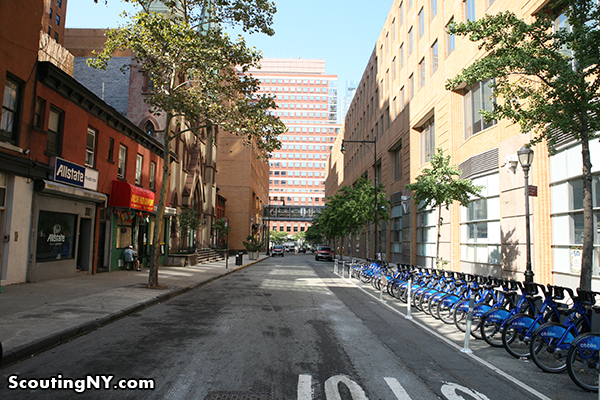
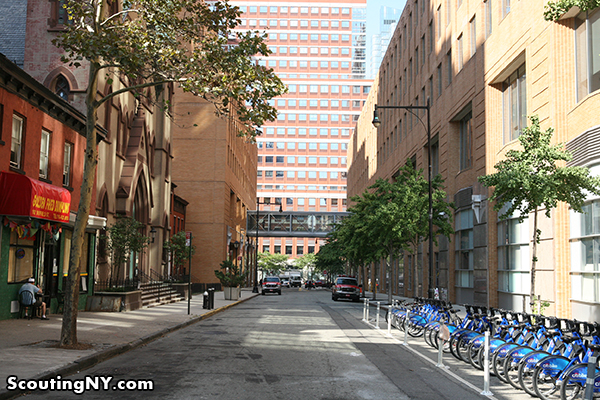

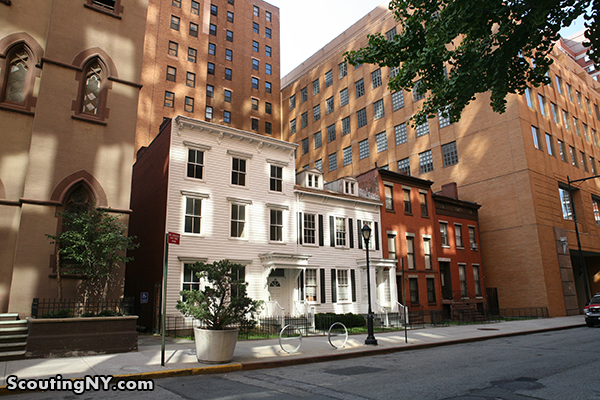

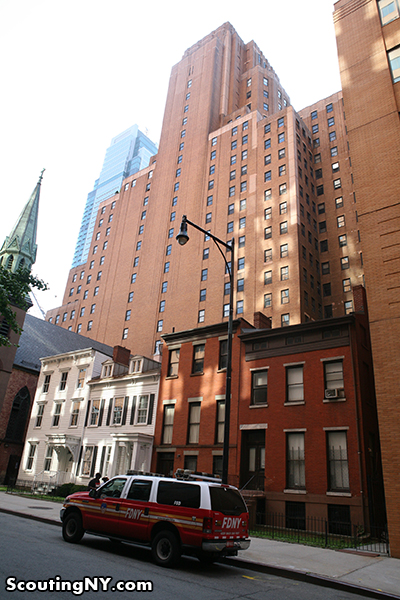

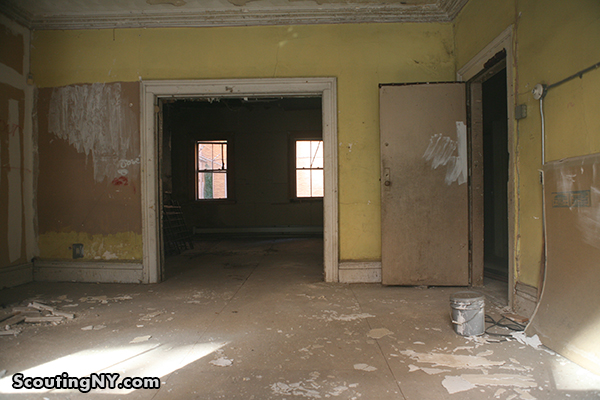
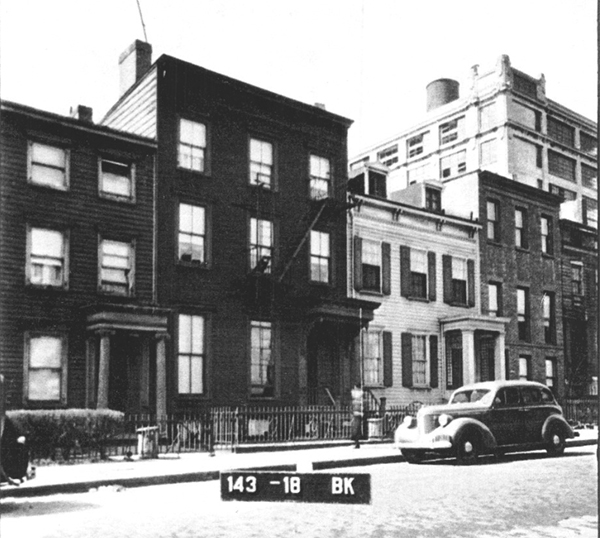
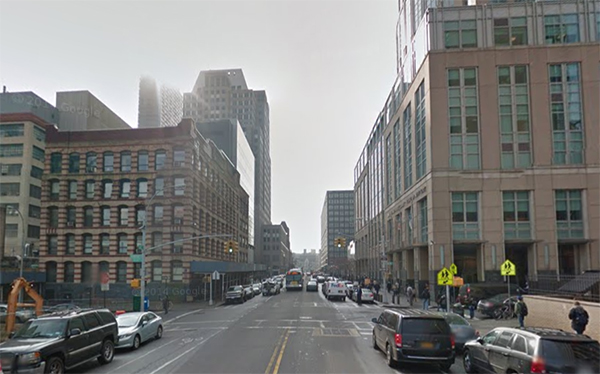
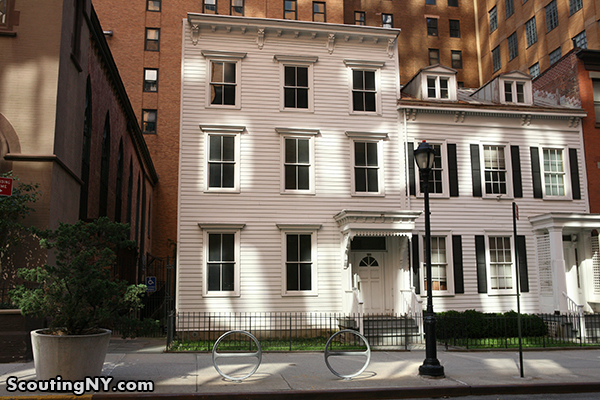
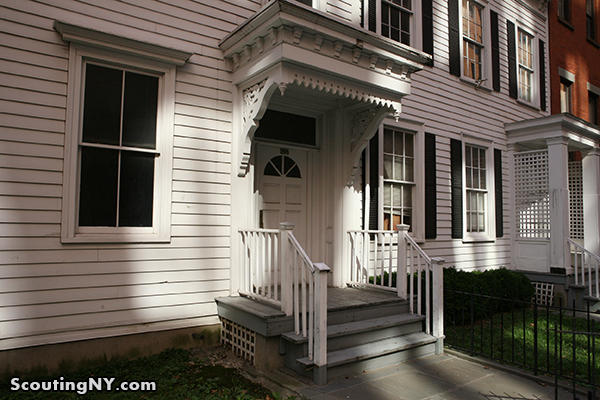
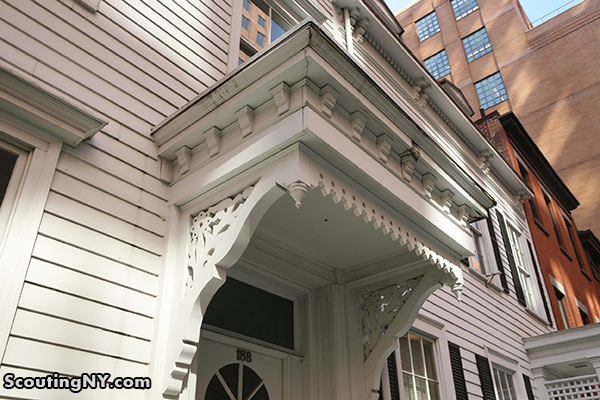
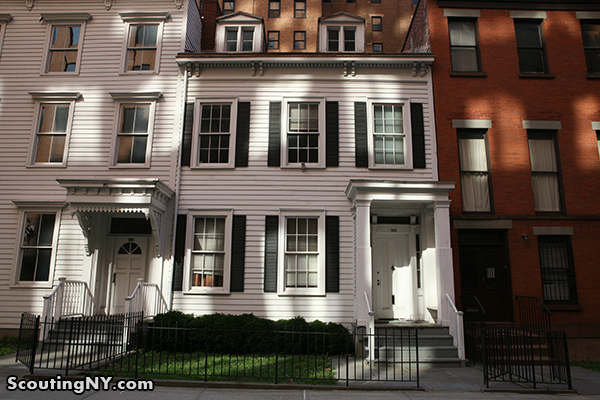
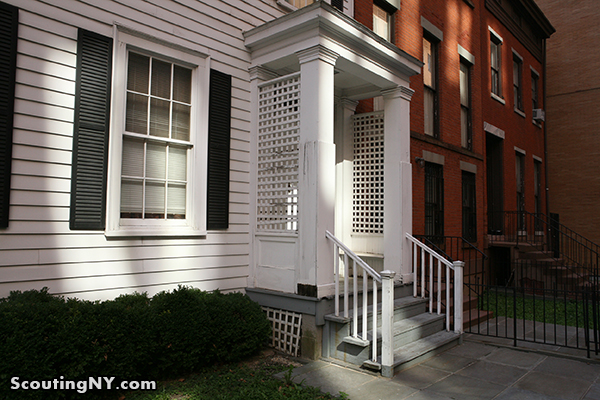

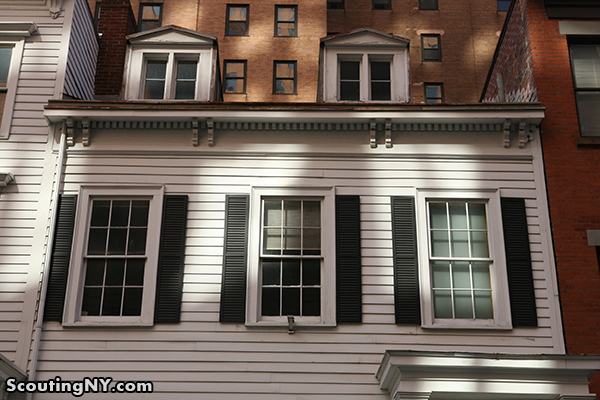
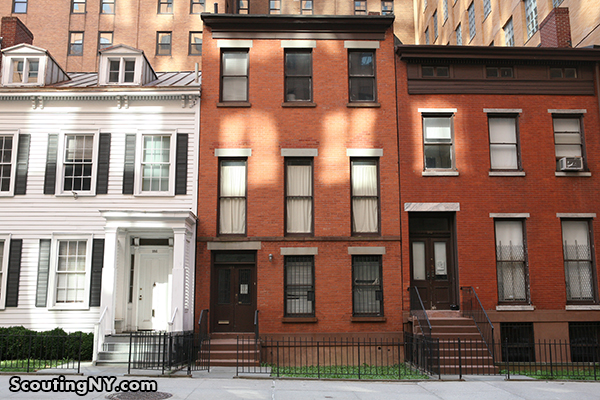



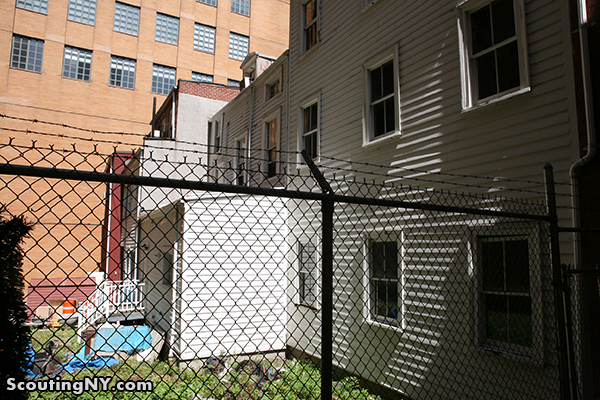


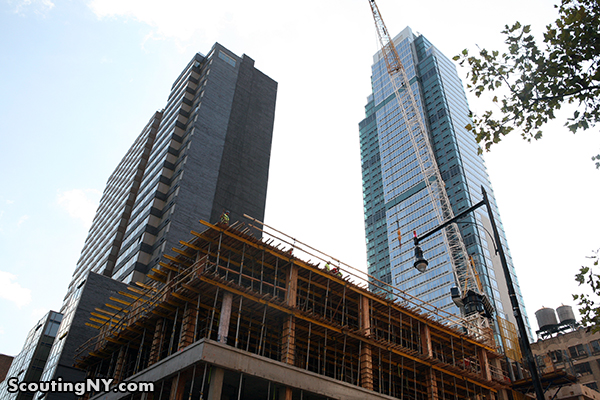
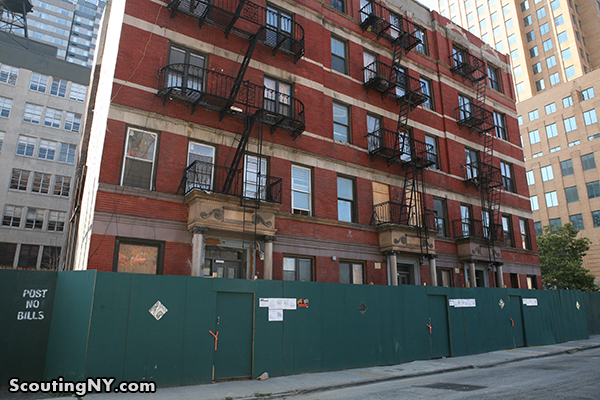
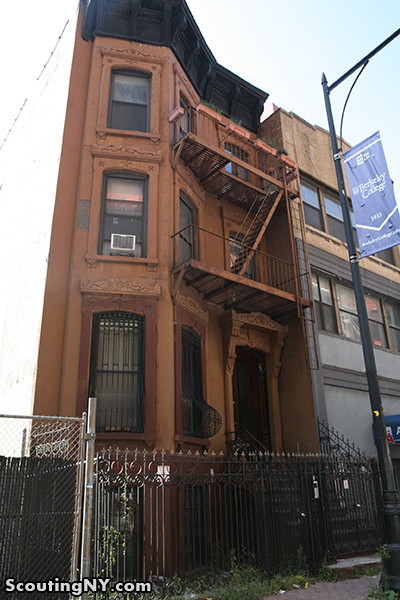
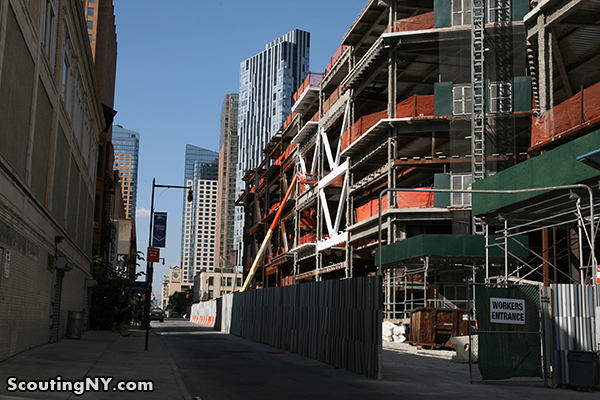
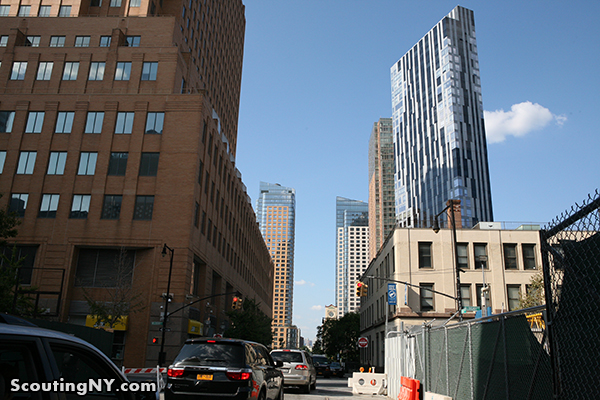
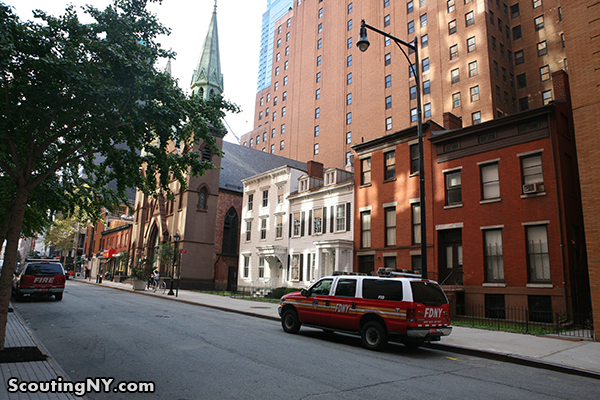

cool. thanks.
Is that a skybridge at the end of Duffield Street…?
“Like”!
In every one of your stories there is a line or a photo that makes me gasp – sometime with the beauty of what you have found, sometimes with the horror of knowing that a building will be lost. Thank you for at least preserving some of them in photos.
are these the underground railroad houses? i may be confusing these with something else, though.
No, those are between Willoughby and Fulton where a Sheraton sprung up across the street and a “boutique” hotel is next door. One of those was subject to an eviction a few years ago.
This is a great story. I’ve always wanted to know about those houses.
I used to live in this building in 1990 https://www.flickr.com/photos/scoutingny/14915884828
Run down and falling tiny 2BR apt for $800/month in a convenient yet awful location where shoppers from Fulton Mall routinely used our sidewalk as a public toilet. I am astounded that this building still stands as it seemed like it would’ve collapsed due to landlord neglect at any moment 24 years ago.
One of your best ever!
wow, that brown building being demolished is amazing
What is the church shown? Don’t they believe in historic preservation in downtown Bklyn? Very sad to see those buildings to be demolished…
I believe it is St Boniface. I used to attend mass there
Funny I just passed there today and had similar thoughts, as in, “are these really still here?” You’ve answered some of my questions. Great article and photos!
I walk by these every day when I walk to the bus from Planet Fitness. Every time I walk by, I stop and stare at their beauty. I always wondered who lived in them. Thanks!
Thanks for this precious piece of Brooklyn history. I am doing genealogical research into my Irish roots and have discovered that my great grand mother gave birth to her first child, Mary Donnelly, on August 19, 1881 at 182 Johnson Street. The baby was delivered at home. The Donnelly family was among the working poor in the neighborhood. Some family members worked at the Brooklyn Navy Yard.
Wow! My grandfather was born at 184 Johnson Avenue in 1870. The Mayer family was of Bavarian descent. the had originally lived in lower Manhattan near St. Nicholas Church (German Roman Catholic) and when Rev. Reffeiner broughrt land for a new German parish in Brooklyn (the country) – they and many other families followed him to Most Holy Trinity parish.
What i am trying to figure out is the address you note on the webpage ids that the original Johnson Ave address or the new address on Duffield? Mr. Johnson must have been very influential . Johnson Avenue is a long street.
awesome
Swanke Hayden Connell Architects performed the historic preservation of the Duffield Street houses some 20 years ago for Forest City Ratner Companies. Swanke was also responsible for some of the renovation work / restoration work for the church next door, St. Boniface. I was fortunate to be the project architect for the exterior restoration of these four houses. The interior of 186 Duffield Street was also restored. Thank you for highlighting them in your post!
Bless you! These are wonderful.
Thank you! I’ve always wanted to know about those beautiful houses.
I wonder if anything was demolished to make room for relocating these buildings?
The house with the dormer Windows, the family that lived there were our family friends and I spent many days there and slept there many may times, till they sold and moved to Florida